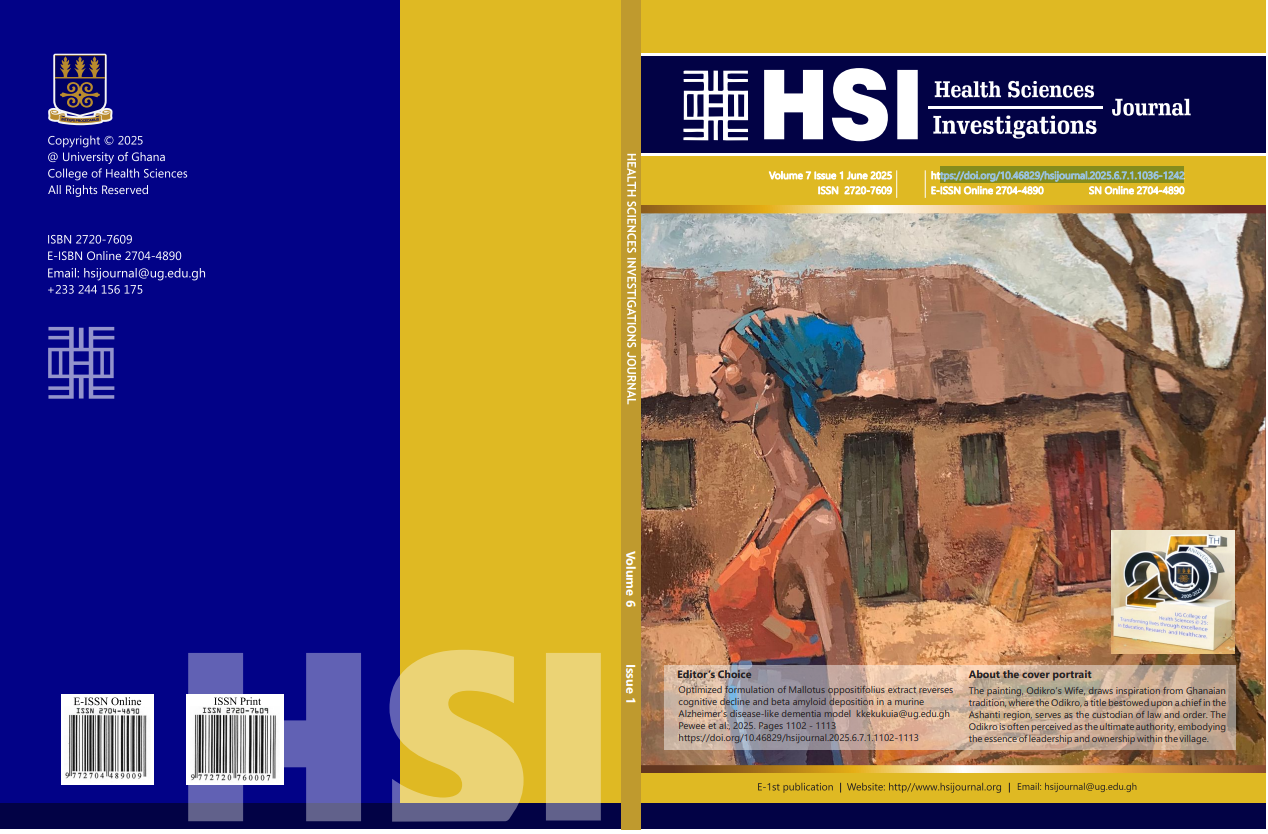Prevalence of prediabetes and its risk factors among adults in selected communities in Accra
Abstract
Background: Diabetes mellitus is a global health issue, with cases projected to surge from 180,000,000 in 1980 to over 693,000,000 by 2045. Considering that prediabetes precedes type 2 diabetes, early diagnosis and timely intervention are essential to prevent or delay disease progression.
Objective: This study assessed the determinants of prediabetes among adults in selected Accra communities.
Methods: This study investigated prediabetes prevalence in five Accra communities - North Kaneshie, Madina, Teshie, Lapaz, and Legon. A cross-sectional study used multistage sampling to recruit 360 adults (≥ 18 years). Eligibility required Accra residency (≥ 1 year), 10 – 12-hour fasting, and informed consent. Sociodemographic variables, behavioural patterns, dietary intakes, anthropometric measures and clinical indicators were collected. Logistic regression was employed to estimate associations between all variables and prediabetes status.
Results: Prediabetes and diabetes prevalence were 26.7% and 29.4%, respectively. Significant associations were found with prediabetes for female sex (OR: 2.03, 95% CI: 1.02 - 4.59, p = 0.031), age 40 - 59 years (OR: 2.97, 95% CI: 1.10-8.32, p = 0.039), and being single (OR: 2.60, 95% CI: 1.05-6.43, p = 0.038). Behavioral factors linked to prediabetes included salt intake (AOR: 6.25, 95% CI: 1.69-23.02, p=0.006), smoking (AOR: 10.14, 95% CI: 1.21-111.03, p = 0.002), caffeine intake (AOR: 2.51, 95% CI: 1.53 - 11.88, p = 0.012), and low physical activity (AOR: 3.53, 95% CI: 1.83 - 7.89, p < 0.001). Increased consumption of starchy foods (AOR: 3.63, 95% CI: 1.74 - 7.58, p = 0.007),
animal-sourced foods (AOR: 2.54, 95% CI: 1.36 - 4.86, p = 0.015), fats and oils (AOR: 5.87, 95% CI: 2.76 - 12.51, p = 0.001), and legumes (AOR: 2.45, 95% CI: 1.23 - 6.11, p = 0.045) were significantly linked to prediabetes. BMI greater than 25kg/m2 (AOR: 4.55, 95% CI: 2.12 - 18.11, p < 0.001), MAP (AOR: 4.21, 95% CI: 1.50 - 11.81, p = 0.006), and stage 1 hypertension (AOR: 6.74, 95% CI: 1.50 - 30.29, p = 0.015) showed associations with prediabetes.
Conclusion: Prediabetes prevalence was high, driven by sociodemographic, dietary, and behavioural factors. Lifestyle and physiological risks underscore the urgent need for targeted interventions in this population.


